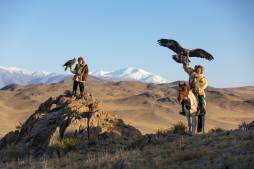Challenges and Solutions in the Science of Reintroducing Captive-Bred Wildlife

Reintroducing captive-bred animals into the wild is a vital conservation strategy aimed at restoring endangered species populations and preserving biodiversity. However, this process involves complex scientific challenges that require careful planning and execution. Understanding the science behind reintroduction efforts helps improve success rates and ensures that these animals can thrive once released.
Understanding Captive Breeding Programs
Captive breeding programs involve raising animals in controlled environments such as zoos or breeding centers to increase their population numbers safely. These programs focus on maintaining genetic diversity, preventing inbreeding, and preparing animals for eventual release back into their natural habitats. Scientific research guides breeding decisions to ensure healthy, genetically viable individuals are produced.
Challenges Faced During Reintroduction
One major challenge is ensuring captive-bred animals adapt successfully to wild conditions after release. Animals raised in captivity might lack essential survival skills like hunting, predator avoidance, or social interactions needed in the wild. Additionally, captive environments may not fully replicate natural habitats, leading to behavioral differences that hinder survival. Disease transmission between released animals and wild populations also poses risks requiring thorough health assessments.
Scientific Approaches to Enhance Success
Researchers employ several methods to improve outcomes in reintroduction projects. Pre-release training simulates natural behaviors such as foraging or predator evasion within safe environments. Soft-release techniques gradually acclimate animals by providing support like supplemental food while they adjust to the wild. Genetic studies help maintain diversity and avoid releasing individuals with harmful traits. Post-release monitoring using tracking devices provides valuable data on animal movements, behavior, and adaptation progress.
Case Studies Demonstrating Effective Reintroductions
Successful reintroduction initiatives include black-footed ferrets in North America and Arabian oryx in the Middle East. Both projects integrated scientific research with practical conservation efforts like habitat restoration and community involvement. These examples highlight how addressing ecological needs alongside scientific knowledge can lead to sustainable wildlife populations being restored effectively.
Future Directions for Research and Conservation
Ongoing advancements such as improved genetic tools, behavioral studies using technology like camera traps or drones, and increased collaboration between scientists, governments, and local communities promise better strategies for future reintroductions. Emphasizing ecosystem health alongside individual species recovery ensures long-term conservation success while adapting approaches based on lessons learned from past efforts.
The science behind reintroducing captive-bred wildlife continues evolving as researchers tackle its inherent challenges with innovative solutions grounded in ecology, genetics,and animal behavior studies.Informed strategies not only enhance survival chances after release but also contribute significantly toward global biodiversity preservation efforts.
This text was generated using a large language model, and select text has been reviewed and moderated for purposes such as readability.











